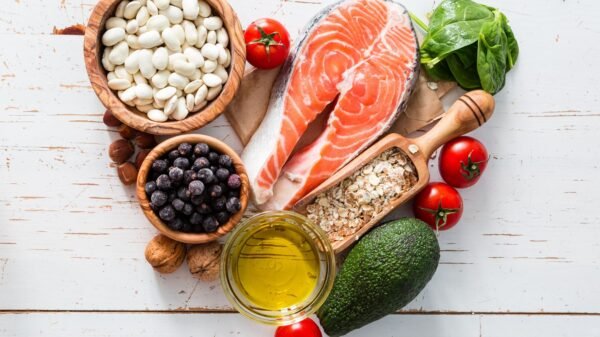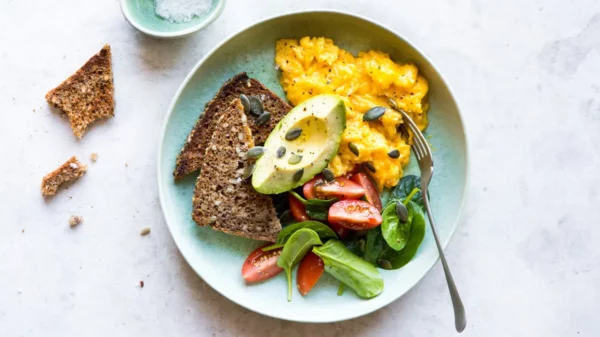
How to Easily Improve Your Eating Habits

The good news is that having a healthy diet involves cheating every now and then. Diets focus on depravation, whether it’s calories or food groups. The assumption is that with just a little willpower, you can hold off on consuming the targeted items and achieve the goals you want. This theory is flawed. Willpower is a finite resource. And extremely unreliable.
The reason why the occasional cheat is an easy method to improving nutrition is because it will keep up your morale. By allowing yourself the occasional indulgence you will appreciate the healthy choices (and possible sacrifices) you are making. By keeping things in balance and planning to give yourself something you enjoy occasionally, you will appreciate the journey you are on, and you will be more likely to stick to it.
It is also important to shift your focus away from counting and weighing, and move towards building effective habits so that you eat healthily without stressing about calories or worrying if there are too many peas on your plate.

A handy way to tackle portion control
Measuring portions of macronutrients (proteins, carbs and fats) with your hands is the simplest way to get all the nutrients you need without under- or over-eating.
The measurements are simple:
Palms measure protein
Cupped handfuls measure carbohydrate (try to consume this only after a workout)
Thumbs to measure fats like nuts and butter
Non-starchy veggies – eat as much as you like
By following this simple format, you will instantly know your meals are portioned correctly for you, as your own hands are the perfect measure for your own body.
These portions represent a personalised way to consume enough nutrients to eat healthily, every day.
So, rather than weighing your food or counting calories, this method of working out how much protein, carbohydrate and fats to eat is much simpler and easier.
Protein in every meal
Managing carbohydrate intake is seen by some as being important for changing your body. However, regular protein intake can be a much more effective option to getting great results.
When you have protein with each meal, you will be able to:
Manage your cravings. Protein helps to manage blood sugar levels. Protein takes longer to digest, so it slows down energy release into your blood stream. This means your blood sugar levels remain consistent as opposed to dramatic spikes in energy caused by meals without protein. Dramatic spikes lead to equally dramatic fluctuations in blood sugar levels, which lead to cravings.
Maintain lean muscle mass. Protein is a foundational element that is necessary to build and maintain muscle mass. The more lean muscle mass you maintain, the more effective you will be at maintaining a healthy weight.
Make sure your plate is colourful
Different colours of vegetables mean different types of nutrients. The more colours (and therefore varieties) of nutrients you get, the better off you will be for two reasons:
1. Increased protection from chronic diseases: different colours of vegetables and fruits have been associated with a variety of health benefits.
2. Improved gut health through the development of healthy gut bacteria: the healthier your gut bacteria is, the more likely you will fully digest the healthy things you eat.
Also, by improving your healthy gut bacteria you reduce the risk of inflammation. Inflammation is the foundation for a host of chronic diseases including Alzheimer’s, cancer, and heart disease. By fortifying your diet with colourful fruit and veg, you can help mitigate the risk of these illnesses.
Fat is not the enemy
Low-fat choices are still widely considered to be a healthy option.
The problem is that fat is also a source of flavour (to test this theory, try low-fat yogurt versus full-fat yogurt). Unfortunately, to counteract a low-fat lack of flavour, sugar is often added.
In addition to improving flavour, fat (and by this, I mean good fats like olive oil, nuts, seeds, and butter) is an essential part of a healthy diet. It is not the enemy.
Healthy fats help your body produce hormones, as well as lowering the risk of heart disease, controlling blood cholesterol levels, and helping balance blood sugar levels.
But despite these benefits, fats are still high in calorie content and thus should be consumed in smaller quantities. By choosing a smaller quantity of full fat instead of a low-fat option, you will be reaping more long-term benefits while at the same time managing your portions.
Summary

These easy to follow and simple to implement approaches are designed to help you improve your eating habits easily and without a lot of thought. Take it easy, keep it simple, stick to small steps, and do not stress yourself by trying to do it all at once. Small changes are the easiest to make, and easier to stick to.
ABOUT THE AUTHOR:

James Staring is the founder and lead fitness coach at Fit to Last Personal Trainers, which offers a high-end, all-inclusive fitness solution for those who’ve tried everything in the past; crash diets, exercise fads, regular gyms etc., all with little to no success or results. Fit to Last works in partnership with you to create a personalised programme of exercise, nutrition (no calorie counting or weighing) and small, simple lifestyle changes, to keep you on track to your goals, injury free and bursting with energy. Web: www.fittolast.co.uk














































